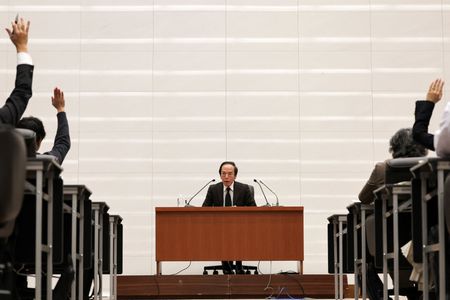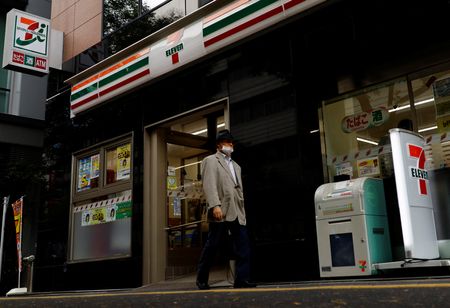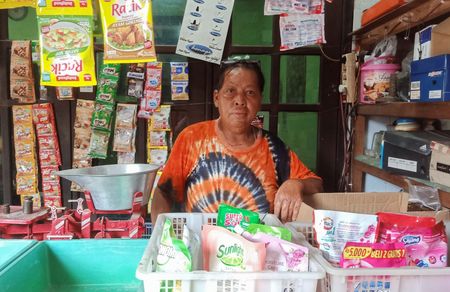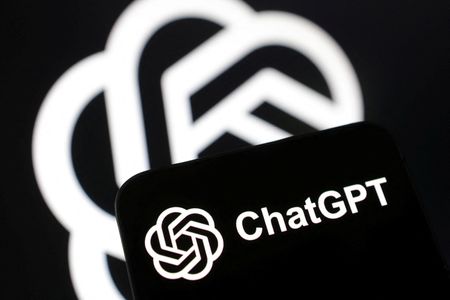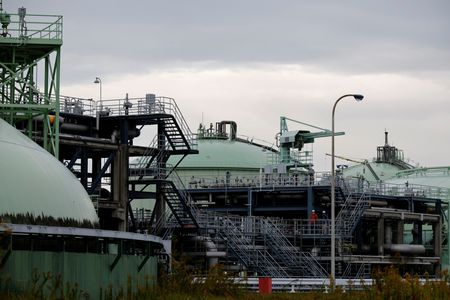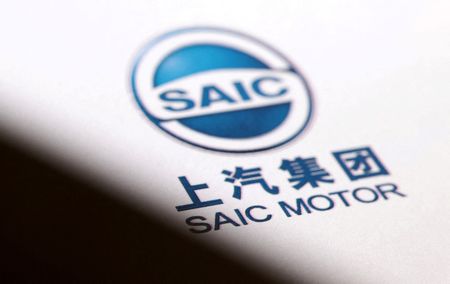By Leika Kihara
TOKYO (Reuters) – Investors in Japan’s government bond market are getting a glimpse of life without heavy intervention by the Bank of Japan, which is showing little sign of reverting to a hands-on approach despite the recent steady rise in long-term interest rates.
BOJ Governor Kazuo Ueda issued a mild warning on Friday that it could increase bond buying if “abnormal” market moves trigger a sharp rise in yields, but he was reiterating the bank’s pledge made when it began tapering bond purchases in July last year.
Ueda said the BOJ was unwavering in its stance to allow market forces to determine long-term interest rates.
After ditching a policy capping bond yields around zero last year, the BOJ has set an extremely high hurdle for conducting emergency bond buying operations – a tool it sets aside only for exceptional cases such as an abrupt, uninterrupted spike in bond yields, said two sources familiar with the bank’s thinking.
“It’s natural for bond yields to creep up if market bets on the (BOJ’s) terminal rate is rising,” one of the sources said, a view echoed by another source.
“I don’t think the BOJ is too worried about the moves, which are grinding rather than abrupt,” the second source said.
Japanese government bond yields (JGB) have risen steadily since October last year, initially driven mostly by rising U.S. Treasury yields.
The BOJ’s decision to raise short-term rates to 0.5% in January, as well as stronger than expected domestic GDP and inflation data, have accelerated the upward move. The benchmark 10-year yield hit a 15-year high of 1.44% on Thursday, driven by bets the bank could take rates higher than initially thought.
While Ueda’s remarks helped push down the 10-year yield to 1.42% on Friday, some market players predict it could rise to 1.5% in coming weeks.
“I don’t think markets see yields as having peaked just because it hit 1.4%,” said Naoya Hasegawa, chief bond strategist at Okasan Securities, who sees a good chance of the 10-year yield hitting 1.5% by end-March.
Economists polled by Reuters expect one more rate hike this year, though swaps market betting suggests some investors are banking on a 69% chance of two more increases.
TRUMP MAY CALM BOND MARKET
Ueda said on Thursday he did not discuss recent bond yield gains in a meeting with Prime Minister Shigeru Ishiba, prompting some traders to buy yen on the view policymakers saw no problem with the market moves.
The remark came after BOJ board member Hajime Takata, a former bond strategist, said on Wednesday the rise in yields was a natural reflection of an improving economy.
The sanguine approach is a sea change from when the BOJ mixed vocal warnings and huge bond purchases to cap bond yields and reflate the economy under a radical monetary experiment undertaken by former Governor Haruhiko Kuroda.
It also highlights the BOJ’s focus on weaning the economy off decades of massive monetary support including by diminishing its huge presence in the Japanese government bond (JGB) market.
Ramping up bond buying won’t be easy as it would run counter to the BOJ’s efforts to phase out its massive sitmulus.
The BOJ ended Kuroda’s stimulus, including bond yield control, in March last year. It also began tapering its huge bond buying under a plan laid out in July, which would halve monthly purchases to 3 trillion yen ($20 billion) by March 2026.
The central bank is reducing the amount of bonds it buys each month in several stages and now buys 4.5 trillion yen. At the current pace, analysts expect it to take roughly seven years just to halve its 585-trillion-yen holdings – nearly the size of Japan’s gross domestic product (GDP).
“The BOJ likely won’t conduct emergency bond purchases even if yields keep rising because its primary focus is on reducing its huge bond holdings,” said former BOJ board member Sayuri Shirai, now a professor at Japan’s Keio University.
“The current pace of tapering is moderate in the first place,” she said. “The government, for its part, is probably fine as long as the 10-year yield remains below 2%.”
The BOJ hopes its taper plan will help ease market strains caused by its past heavy intervention in the bond market. So far, progress has been slow, according to a BOJ survey that asks insurers, asset management firms and other investors whether the bond market’s volume and liquidity has improved or not.
The survey’s index measuring bond market functioning, which consists of questions such as whether market players were able to make deals in big enough lots, stood at -20, which meant there were more respondents who thought bond market functioning was low compared with those who replied they were high.
The key test will come in June, when the BOJ will conduct a review of its existing tapering plan through March 2026, and come up with a plan for April of that year and beyond.
While internal discussions on the review have yet to begun, the decision will be key to how quickly the BOJ can reduce its huge balance sheet.
If the rise in long-term yields persist, that could affect the pace at which the BOJ would taper beyond April 2026. Rising bond yields could also affect the board’s debate on the pace and timing of raising its short-term policy rate, analysts say.
But it may be U.S. President Donald Trump’s auto tariff threats that could bring down yields by stoking fears of a slowdown in Japan’s economy and taming bets of aggressive BOJ rate hikes, said former BOJ board member Takahide Kiuchi.
“If fears over Japan’s economic outlook heighten and weigh on domestic stock prices, JGBs could be bought back as a safe asset” and push down bond yields, said Kiuchi, who is currently an economist at Nomura Research Institute.
($1 = 150.3600 yen)
(Reporting by Leika Kihara; additional reporting by Tomo Uetake; Editing by Kim Coghill)

